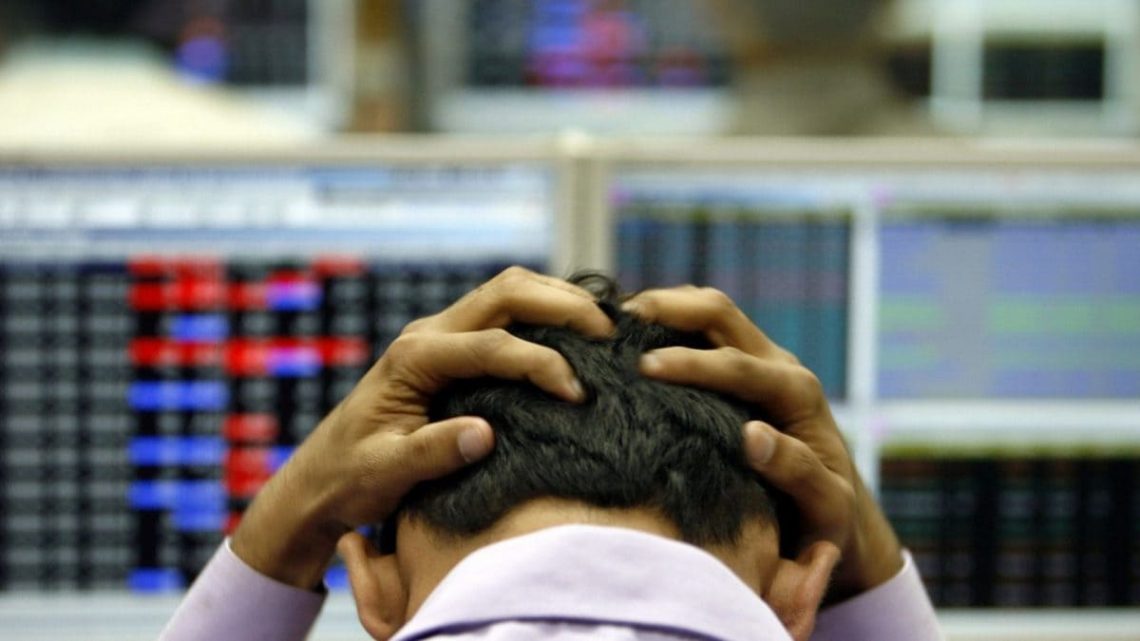Indian benchmark indices – BSE Sensex and Nifty 50 – on Monday ended over 1.50 per cent down with more that 320 stocks hitting a lower circuit limits as India logged first case of human metapneumovirus (HMPV) with three confirmed cases reported in the country – two in Karnataka’s Bengaluru and one in Gujarat.
China, where the deadly Covid-19 originated about five years ago, has again been the first nation to experience the outbreak of HMPV with hospitals overwhelmed with patients of the respiratory virus that causes flu-like symptoms and has no vaccine yet.
On Monday, BSE Sensex fell 1,258.12 points or 1.59 per cent to close at 77,964.99, while Nifty 50 was down 376.75 points or 1.57 per cent to end the day’s trade at 23,628.
During the day, the BSE Sensex nosedived 1,441.49 points, or 1.81 per cent, to hit an intraday low of 77,781.62. The broader NSE Nifty fell 452.85 points, or 1.88 per cent, to touch 23,551.90.
A combination of domestic and global factors contributed to pulling down the Indian stock market on Monday.
Panic stuck investors on Monday after India reported its first case of HMPV with the Indian Council of Medical Research (ICMR) confirming two infants – a 3-month-old female and an 8-month-old male – were tested positive at Baptist hospital in Karnataka’s Bengaluru.
Market analyst Nirav Karkera, Head of Research, Fisdom said today’s move is ‘knee-jerk’ in nature unless the virus situation evolves into something more adverse.
“The first set of HMPV virus cases have been identified in India only very recently. The onset coincides with the ongoing flu season making it difficult to exactly ascertain the extent to which this illness could have spread. However, the Union Ministry for Health has reassured preparedness in managing any such onset of respiratory illnesses. This is a developing situation. It is expected that any negative reactions by market participants would also be limited to the extent of it being knee-jerk in nature. In absence of any further adverse development being recognised or reported, one can expect limited downside across indices, especially in terms of declines that can be exclusively attributed to this illness outbreak,” Karkera said.
Manish Chowdhury, Head of Research at StoxBox, said: “Market sentiment may have turned a little sour due to initial HMPV cases found in India, but its impact may be limited as the fatality seems to be lower compared to the Covid virus.”
The Indian stock market also ended in red as investors remained jittery ahead of the third quarter, or Q3, results that will start coming out from January 9 with Tata Consultancy Services.
Also, weak business updates from key sectors, especially banking and FMCG, have further dampened sentiment.
“Looking ahead, the directionality of the markets will be influenced by third-quarter earnings,” Vinod Nair, head of research at Geojit Financial Services, was quoted as saying by Reuters.
Monday witnessed all the sectors face the selling pressure with metal, FMCG, PSU bank stocks falling over 2 per cent.
The India VIX, a measure of market fear or volatility, surged by 17 per cent amidst broad-based selling pressure affecting both mid and small-cap stocks across various sectors.
Not just the Indian stock market, most Asian markets traded lower as investors are cautious over the potential changes by US President-elect Donald Trump, who has vowed to raise tariffs on imports from China and other countries, potentially denting growth for a region heavily reliant on trade.
Japan’s Nikkei 225 index fell 1.5 per cent, while the Hang Seng in Hong Kong dropped 0.3 per cent. The Shanghai Composite index declined 0.2 per cent.
The persistent selling by foreign portfolio investors (FPIs) has also weighed on the Indian stock market.
FPI selling has continued, with NSDL data showing net outflows of Rs 4,285 crore in January so far.
As per the data by National Securities Depository Limited (NSDL), FPI selling has continued with net outflows of Rs 4,285 crore recorded so far in January.
The strengthening of the US dollar has also contributed to the fall of the India stocks.
In the early trade on Monday, the Indian rupee slipped to an all-time low to 85.82 against the US dollar, inching past its previous all-time low of 85.8075 hit in the last week of December.
The INR fall is pressured by broad-based dollar bids.
Investors are now waiting for a host of US economic data later this week to get more clarity on the Federal Reserve’s rate outlook.
With inputs from agencies.
Link to article –
